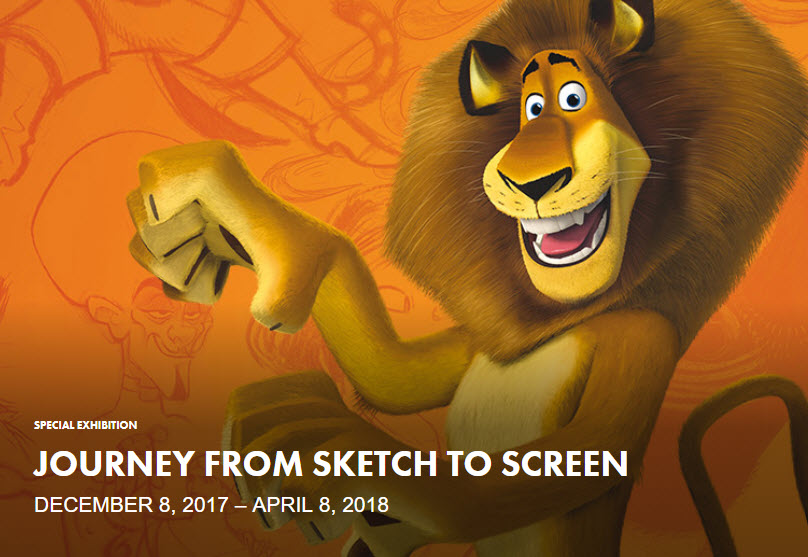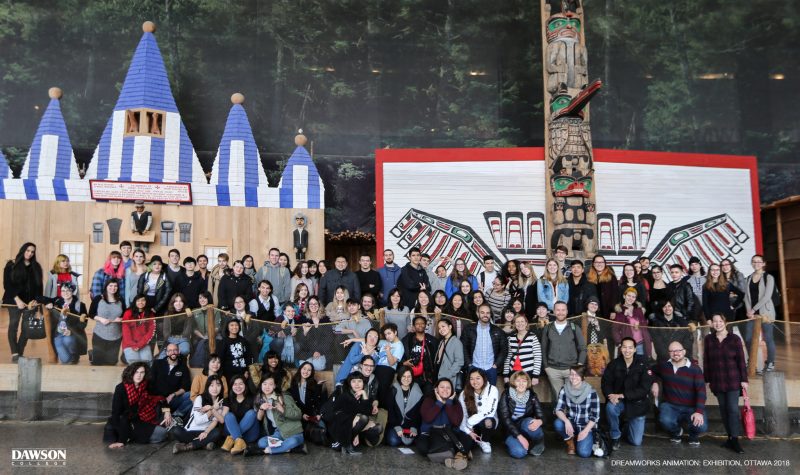DreamWorks Exhibition in Ottawa
March 3rd, 2018Students of 3D animation and students of Illustration both study the visual development of film and video games. The DreamWorks Animation Exhibit displays the rarely seen visual development artwork used in the production of DreamWorks feature animation films including Shrek, Madagascar, Kung-fu panda and How to Train your Dragon.
The exhibit is subtitled “Journey from Sketch to Screen’ and is divided into three parts: Character, Story and World. Each section features interviews, behind-the-scenes footage, original concept art and maquettes. Together they chart the DreamWorks Animation creative journey from an original kernel of an idea through a fully realized animated film.
This exhibit sheds light on the process professional artists go through to successfully develop the look of animated films, and will serve to inform and inspire students as they develop their own visual development projects.
Project Update
DreamWorks Animation: The Exhibition features over 350 items including rare and never-before-seen concept drawings, models and original artworks, interviews and interactive displays from DreamWorks much-loved and favourite animated classics.
The exhibition took staff and students on a journey from original sketches of grumpy ogres and friendly dragons, to the amazing stories and worlds brought to the screen by DreamWorks’ award-winning artists.
The exhibition is divided into three parts: Character, Story and World. Each section features interviews, behind-the-scenes footage, original concept art and maquettes (clay sculptures and miniatures of sets). Together they chart the DreamWorks Animation creative journey from an original seed of an idea through a fully realized animated film.
• Storyboard sequences were on display and broken down, which help the animators visualize and plan each shot!
• A typical pitch sequence was projected in the exhibition
• Computer-generated previsualization makes it easy for animators to experiment with composition, perspective and movement before fully animating a scene; a sample from How To Train Your dragon was on display
• The 2D, hand-drawn opening sequence of Kung Fu Panda stands out from the rest of the 3D, computer-animated film. It’s a dream world of anime-like graphics in inky colours, like traditional woodblock prints, and the images flow vertically, like an unfurling Chinese scroll.
• Look carefully at the stars of the movie Madagascar and you’ll see that each is based on a geometric shape. Alex the lion is all triangles, Marty the zebra a cylinder, Gloria the hippo a circle and Melman the giraffe a skinny stick.
• The zoo animal caper, Madagascar, combines state-of-the-art computer animation with classic cartoon techniques. One is the classic “squash and stretch,” where characters deform when they’re in motion and snap back into shape when they stop.
• Maquettes — clay or plaster sculptures of animated characters — give animators a common reference when they’re working on the same character, and let them visualize it from different angles. Real maquettes are on display in the exhibition.
• It took 80 animators one week to produce each minute of the 84-minute “claymation” movie, Chicken Run. The painstaking technique of stop-motion animation requires physically moving puppets in tiny increments, frame by frame.
• In most animated films, animals are anthropomorphized, meaning they act and talk like people. In Spirit: Stallion of the Cimarron, the hero is portrayed as a real wild mustang in the American West. He never speaks out loud, but communicates with other horses through movement and sound.
• Realistic, relatable facial expressions are the most challenging part of an animated character’s “performance.” Character animators who create that magic are like actors, using careful movement to convey emotions and tell a story.
• Lighting artists “paint” with light to give animated films their final look. They add mood, depth and realism to every scene by adjusting colour and the intensity of light and shadows, and by creating the illusion of wet surfaces, among other tricks.




